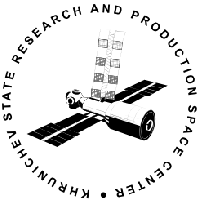Cosmos 2155
Launch Success
Liftoff Time (GMT)
17:51:02
Friday September 13, 1991
Mission Details
Cosmos 2155
At the end of the 1960s, Soviet officials decided to catch up in the field of early warning. The Americans already had three programs in this field to their credit. The satellites were named US-K, or "Oko" (an old Russian word meaning "eye"). To improve the first constellation, placed in orbit by Molniya launchers in an elliptical orbit, a second generation of satellites was developed. The US-KS "Oko-S" satellites are placed in geostationary orbit. Their mission is complementary to the first generation US-K. They are positioned vertically over the area to be monitored, thus allowing permanent surveillance. The loss of one or several US-Ks does not prevent the system from functioning. The first US-KS, Cosmos 775, was launched on October 8, 1975. The second example will not be launched before 1984, nine years later. The "Missile Attack Warning System" SPRN came into service in 1977. The SPRN is capable of detecting a missile launch within 20 seconds. The first US-K satellites, even when coupled to the US-KS, were unable to provide global surveillance, and could not detect SLBM launches. In 1975, it was therefore decided to develop a new generation of early warning satellites, which gave birth to the improved US-KMO satellites. The entire system will be replaced by the Tundra in 2015. The US-KS consists of three compartments: - The engine compartment, which also includes the oxidizer and fuel tanks, as well as 4 small liquid fuel engines for the orbit corrections. We also note the presence of 16 engines for the orientation and the stabilization of the spacecraft. - The compartment of the instruments. - The optical compartment, which includes mainly the telescope (mirror of 50cm of diameter) and the IR sensors. The optical instruments are housed in a 4m long deployable protective cone. The US-K has a launch mass of 2400kg, and an empty mass of 1250kg. The main structure of the satellites is a cylinder of 2m length and 1.7m diameter.
Geostationary Earth Orbit
1 Payload
2,400 kilograms
Rocket


Manufacturer
KhrunichevRocket
Height: 57.64m
Payload to Orbit
LEO: 19,000 kg
GTO: 2,400 kg
Liftoff Thrust
9,548 Kilonewtons
Fairing
Diameter: 4.35m
Height: 10.4m
Stages
4
Launch Site
Stats
Proton-K
195th
Mission
6th
Mission of 1991
Khrunichev State Research and Production Space Center
2459th
Mission
45th
Mission of 1991
1991
67th
Orbital launch attempt